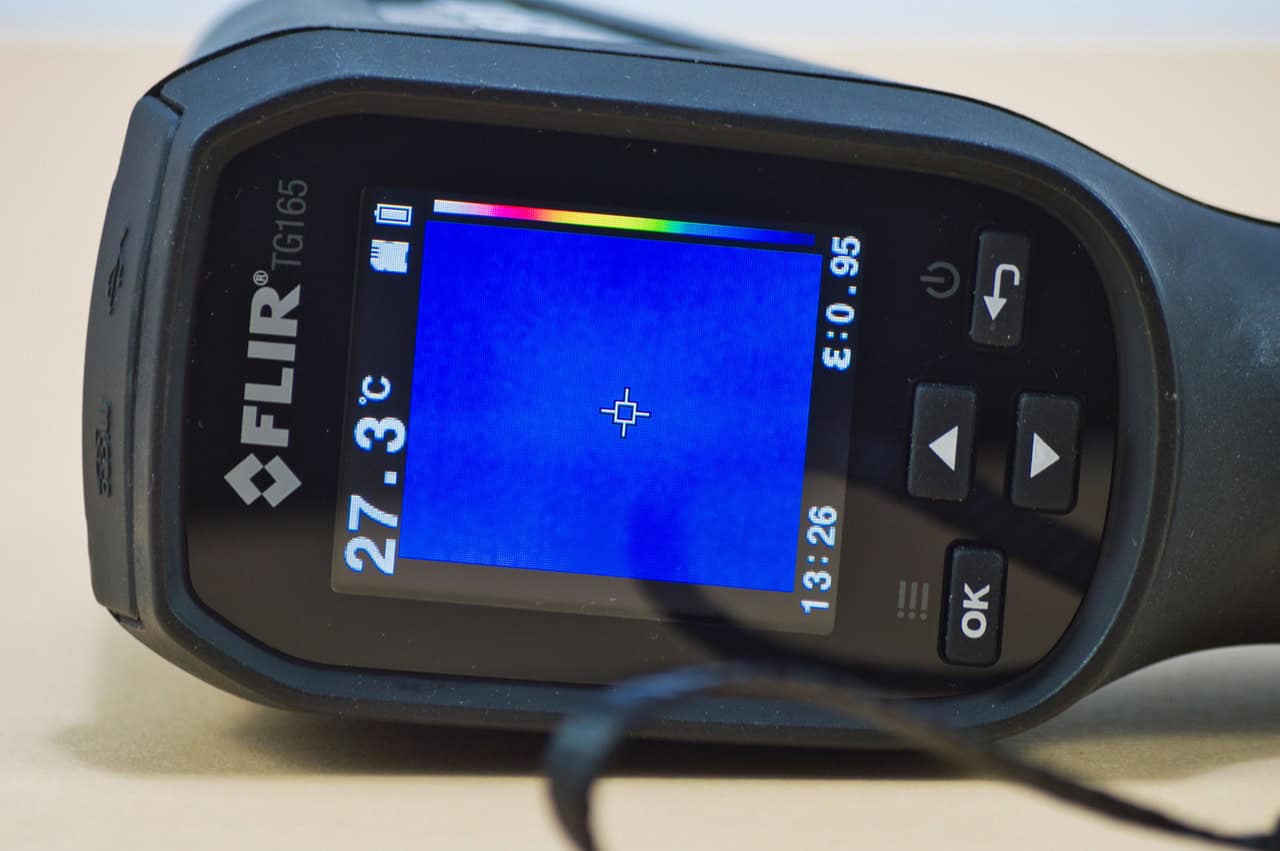Risk-based maintenance is one of the most significant developments in industry in recent years. I’ve watched it transform equipment reliability and minimize downtime. So, how does it work? It’s nothing complicated.
However, it does require a mindset shift. Here are the basics of this game-changing strategy that’s disrupting maintenance strategies in virtually every industry.
Understanding Risk-Based Maintenance (RBM)

Risk-Based Maintenance (RBM) is a maintenance strategy that ranks maintenance activities based on the risk of equipment failure. As an engineer who has worked with industrial machinery for years, I can tell you it’s one of the most significant advancements in the maintenance world.
RBM identifies critical assets, evaluates the risk of failure, and then directs resources accordingly. This differs from traditional maintenance strategies, which often perform maintenance on a fixed schedule regardless of asset condition or importance. Predictive maintenance is another approach that focuses on optimizing equipment performance based on data-driven insights.
The primary components of RBM are risk analysis, ranking of assets, and planning optimized maintenance. By considering the probability and consequence of failure, RBM allows organizations to make more intelligent decisions about where to allocate maintenance resources.
Implementing an RBM strategy provides several benefits:
- Lower maintenance costs
- Higher asset reliability and uptime
- Safer operation
- Optimized resource usage
- Improved compliance with regulatory requirements
RBM is particularly effective in industries with high-value assets and/or significant safety concerns, and you’ll see it frequently used in the oil and gas, power generation, aerospace, and manufacturing industries.
In my experience, the RBM strategy has been a game-changer in challenging industrial environments. It’s not just about fixing things when they break; it’s about understanding your equipment and using data to make decisions that prevent major, costly failures.
Risk Assessment in RBM
The cornerstone of effective RBM is a comprehensive risk assessment. During this step, you identify critical assets assess the likelihood of asset failure and evaluate the consequences of failure.
I can’t stress enough how important this step is. If you can’t measure it, you can’t manage it, and in RBM, we’re managing risk.
We begin by identifying critical assets. These are the assets that, if they were to fail, would have a significant impact on the business, safety, or environmental concerns. For example, in a steel mill, blast furnaces, rolling mills, and critical control systems might be critical assets.
Then, you assess the likelihood of asset failure. This involves looking at historical data, maintenance records, and the current condition of the asset. You’ll consider variables like asset age, operating conditions, and asset historical performance.
Assessing the consequence of asset failure is equally important. You’ll look at the potential consequences in terms of production, safety, environmental, and financial impacts. For example, a sensor not working might not be a big deal, but if a blast furnace doesn’t work, it could be catastrophic.
Many companies use a risk matrix to visualize and rank risks. Here’s an example of a typical 5×5 risk matrix:
| Likelihood/Consequence | Negligible | Minor | Moderate | Major | Catastrophic |
|---|---|---|---|---|---|
| Very Likely | M | H | H | E | E |
| Likely | L | M | H | H | E |
| Possible | L | L | M | H | H |
| Unlikely | L | L | L | M | H |
| Rare | L | L | L | L | M |
(L = Low, M = Medium, H = High, E = Extreme)
There are both quantitative and qualitative risk assessment approaches. Quantitative methods use numerical data and probabilistic models. Qualitative methods rely more on expert judgment and experience. In practice, I’ve found a mix of both typically yields the best results.
Implementing Risk-Based Maintenance
Implementing RBM requires a systematic approach. Here’s a step-by-step process that I’ve used to implement RBM:
- Define objectives and scope
- Identify and prioritize assets
- Conduct risk assessments
- Develop maintenance strategies
- Allocate resources
- Implement and monitor
- Review and improve
Implementing RBM relies on data collection and analysis. You need data on asset conditions, failure modes, operating parameters, and maintenance history. This information might have previously been inaccessible, but modern sensors and IoT devices provide real-time data that significantly improves your ability to accurately assess risks.
Developing RBM maintenance strategies is simply the process of aligning maintenance activities with asset risk. For example, high-risk assets likely require more frequent inspections or condition monitoring, whereas low-risk assets may still be managed with basic run-to-failure maintenance strategies.
RBM maintenance strategies then comes down to resource allocation. By switching our asset strategies to managing risk, I’ve seen companies dramatically improve their maintenance execution effectiveness.
Training is non-negotiable to successfully implementing RBM. Your team needs to understand the principles of risk and how to apply the tools and techniques to assess risk. This isn’t just a technical change. It’s a cultural change in how you approach maintenance.
The most difficult aspect of implementing RBM is often integrating it with your existing maintenance system. This can range from updating your CMMS to adding new condition monitoring tools.
Risk-Based Maintenance Techniques and Tools

RBM employs various methodologies and tools to analyze and control risk. Here are some of the key methodologies I use in RBM:
Failure Mode and Effects Analysis (FMEA) is a systematic approach to identifying potential failures and their causes and effects. It’s particularly helpful for evaluating the risk associated with complex machinery.
Fault Tree Analysis (FTA) is a deductive analysis using Boolean logic to evaluate system failures. It’s excellent for understanding how a combination of failures can lead to a significant event.
Reliability Centered Maintenance (RCM) is a process designed to ensure that an asset continues to do what its user wants in its present operating context. This is a good supplement to RBM because it focuses on preserving system functions. Reliability analysis is a crucial component of RCM and helps in understanding the overall system reliability.
Various condition monitoring techniques are an essential part of RBM. These include vibration analysis, oil analysis, thermography, and ultrasonic testing. When you use these techniques, you can gather real-time data on the equipment condition and catch potential failures before they occur.
Predictive maintenance technologies are a game-changer for RBM. Machine learning and AI can analyze copious amounts of data to predict when equipment will fail. I’ve seen this technology drastically improve maintenance efficiency while minimizing downtime.
There are also several software solutions that can facilitate RBM implementation:
- Asset Performance Management (APM) systems
- Risk assessment software
- Condition monitoring software
- Predictive maintenance software
- Integrated maintenance management systems
These software solutions will help you collect and analyze data, manage workflows, and make data-driven decisions about maintenance priorities.
Key Performance Indicators (KPIs) for Risk-Based Maintenance
It’s also important to measure the success of your RBM program. Here are a few key KPIs I recommend:
- Overall Equipment Effectiveness (OEE)
- Mean Time Between Failures (MTBF)
- Mean Time To Repair (MTTR)
- Maintenance Cost as a Percentage of Replacement Asset Value (RAV)
- Risk Reduction Index
- Planned to Unplanned Maintenance Ratio
To establish a performance measurement system, determine which KPIs to use, the current baseline and the target. Then, report on these metrics regularly.
Analyzing KPI data requires knowledge and context. For example, reducing maintenance costs seems positive until you realize it’s because you are experiencing more equipment failures.
Use KPIs to make continuous progress. If your KPIs are not where you want them to be, figure out why and adjust your program.
Case Studies and Success Stories
I’ve seen RBM completely turn around maintenance practices in various industries. For example, one oil refinery I worked with was able to reduce maintenance costs by 25% and simultaneously improve equipment reliability by implementing RBM.
A power generation company was experiencing issues with unplanned outages. Through the implementation of RBM, they were able to increase their plant availability from 85% to 95%, which had major impacts on revenue.
However, these successes were not achieved without some pushback. Change management, data quality problems, and lack of resources were common challenges. However, all of these were overcome with proper planning, training, and leadership support.
The benefits are hard to ignore: less downtime, reduced maintenance costs, improved safety statistics, and the equipment running better. When done correctly, RBM can truly transform your maintenance practices. It’s important to understand the differences between predictive vs preventive maintenance to choose the right approach for your specific needs.
Final Thoughts
RBM isn’t something you can apply broadly overnight. It requires thoughtful planning customized execution, and constant iteration. I’ve watched businesses fail with RBM because they either rushed through the process or didn’t invest in proper training. Successful RBM depends on comprehensive risk assessments, reliable data analysis, and a willingness to constantly optimize.
When done correctly, RBM can dramatically minimize downtime, lower costs, and increase safety. The key is to minimize your initial scope, learn from the first few victories, and slowly expand. After all, effective RBM is really a process, not an event.






